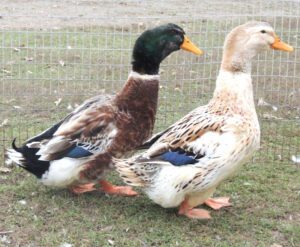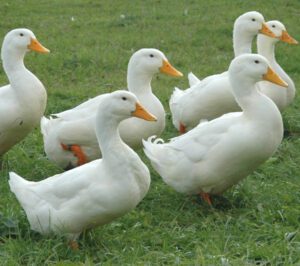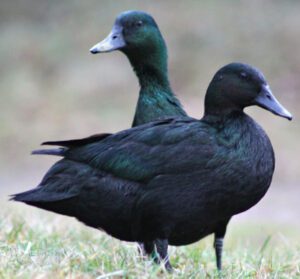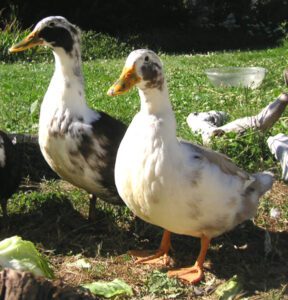How to tell the differences between male and female ducks? It is a very common question people often ask, especially the beginners who are new in raising ducks.
There are some basic differences between male and female ducks. But the differences between male and female ducks will not be readily obvious, depending on the duck species.
Although if you know what to listen and look for, then you will be better able to tell a male duck from female ducks. And this is much easier for the experts, but pretty difficult for the beginners.
If you follow the methods mentioned in this guide, you will definitely be able to tell the differences between male and female ducks.
Why distinguishing between male and female ducks is important for a farmer?
Distinguishing between male and female ducks is very important for a farmer for numerous reasons. Distinguishing male and female ducks helps to maximize eggs production, ensure successful breeding, feeding and caring, monitoring behavior management and reducing feeding costs. So, as a new farmer you should know the differences between male and female ducks and also learn the ways to differentiate them.
How To Tell The Differences Between Male And Female Ducks?
There are actually four principal ways for recognizing a duck’s gender. And these ways are sound, behavior, external appearance and internal anatomy.

Here we are trying to describe more about the differences between male and female ducks.
Way 1: Observe Physical Appearance
In many duck species, the male ducks have more colorful feathers and bills. And the females generally exhibit duller colors. For example, the male Mallard ducks have glossy green heads, bright yellow bills and bodies of brown, gray and black. Whereas the female Mallards have an orange and brown bill and a mottled-brown body color. The male Mallard ducks have white tail feathers and a black-tail-curl that females lack.
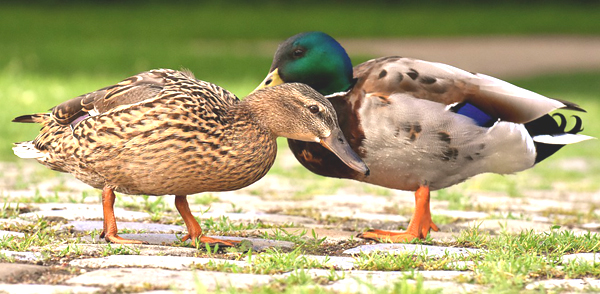
The Northern Shoveler male ducks have a white chest with chestnut flank, but the females have a brownish speckled body. In many species, the male ducks will have very bright coloration in their plumage for attracting mates during the mating season. And the males will molt and lose their bright coloration after mating season, and resemble a female.
Way 2: Observe Bill Color
Observing the bill color is another way to tell the differences between male and female ducks. The bill color doesn’t change during the mating season in many duck species. In case of Mallard ducks, the bill color of the males is bright yellow and the females have a brown and orange bill.
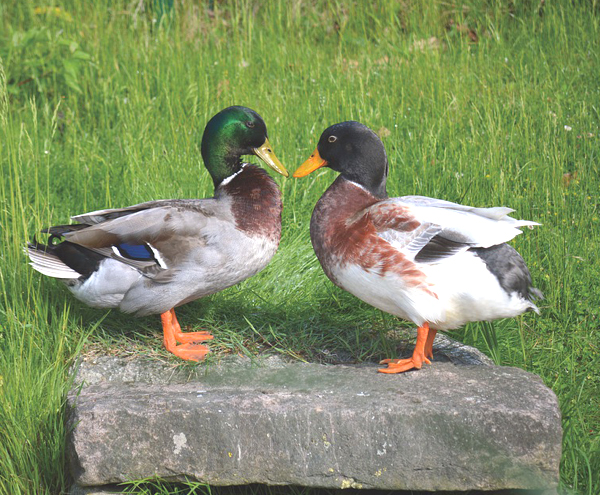
The Mottled male ducks have a bill that is a solid olive green to yellow color. And the female’s bill is brown to orange with dark spotches. The male Wood ducks have a red bill that has a patch of yellow at the bottom.
Way 3: Curled Feather Near The Tail
The male ducks will generally have an upwardly curled feather near their tail.
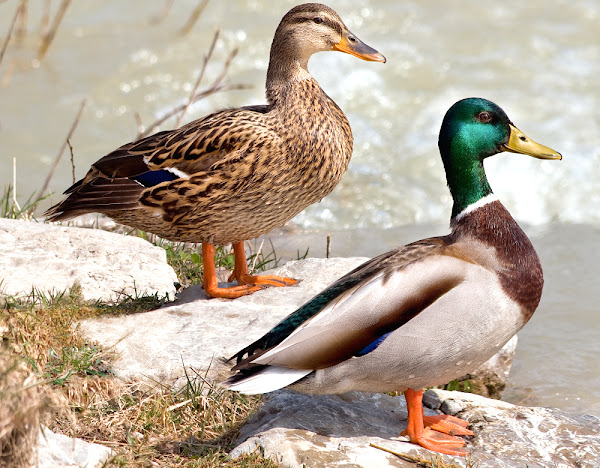
In males this feather will become noticeable in male ducks when they are aged between 2 and 4 months, and remains after molting. The females generally don’t have this feather.
Way 4: Check The Vent
Ducks’ reproductive organs are inside their bodies. So, telling the males apart from the females takes a little more expertise if you’re attempting to make a distinction based on the plumbing.

Although, it’s possible to roll a duck over and turn its vent outward so you can see the organs. Unless you’ve had experience doing this, checking a duck’s vent to determine gender is best left to the vet.
Way 5: Observe Their Size
In most duck species, the males are generally larger than the females.
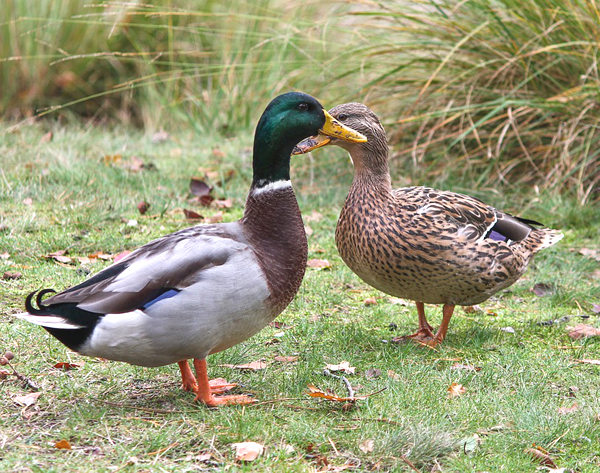
The male Rouens, Welsh Harlequins and Mallard ducks have larger heads and thicker necks than the females, but their body is larger.
Way 6: Behavioral Differences
There are some behavioral differences between male and female ducks. The male ducks generally have a wide variety of species-and gender-specific behaviors that differ from those of their female counterparts.
For example, male Mallard ducks court females by bobbing their heads from one side to the other (glancing over their shoulders or flapping their wings as they raise up above the water).

The Mallard will make threatening moves with an open bill and an acrobatic chase, when confronted by another male. The male Bufflehead ducks attract females by flying overhead and then skidding to a halt on the water, raising their crests and bobbing their heads.
Way 7: Sound
It is also possible to tell the differences between male and female ducks by observing their sound. The female ducks generally have a hard and loud quack than the males. And the males generally have rough and soft quack.
Way 8: Internal Anatomy
Telling the difference between male and female ducks by looking at their internal anatomy is a bit complex. And the main way to tell male and female ducks apart internally is by their reproductive organs. Male ducks have testes, and female ducks have ovaries. However, these organs are inside the body and not usually visible without a surgical procedure.
The size and position of these organs can be different in males and females. For example, in breeding season, male ducks might have larger testes. But remember, this is a very technical method and usually only done by veterinarians or scientists. You don’t need to worry much about it. You will learn the differences gradually if you keep ducks for few months.
Way 9: Seasonal Changes
The male and female ducks look alike in some duck breeds during certain seasons, for example during breeding season. Freckled duck is one such breed. The males and the females have identical feathers, but the male sports a red color on his bill during breeding.
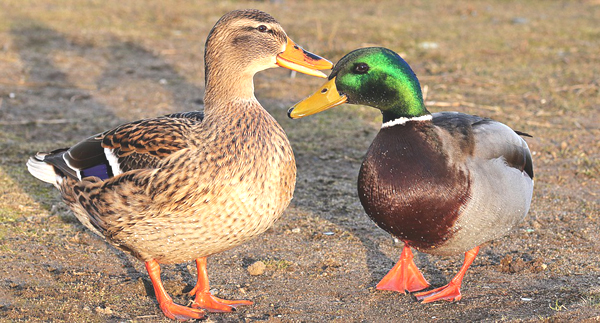
These are the steps and ways to distinguish male and female ducks. You will gradually learn more and be able to tell the differences between a male and a female duck after seeing it for the first time. But it will need more time and more experience in raising ducks. Hope this guide has helped you! Good luck & may God bless you!
Frequently asked questions (FAQs)
People often ask some questions regarding the differences between male and female ducks. Here we are listing the most common and frequently asked questions about the differences between male and female ducks.
How to identify male and female duck?
Identifying male and female ducks is relatively very easy and simple. You can easily identify the male and female ducks if you raise ducks for few months. Follow the steps mentioned above for identifying male and female ducks. You can ask for help from an expert if you face problems.
How can you tell male and female ducks apart?
Doing this is relatively easy and simple. Just follow the steps mentioned above for telling the differences between male and female ducks.
What are male and female ducks called?
The male ducks are typically called “drakes”. While the female ducks are called “hens”. And the young ducks are usually called “ducklings”.

